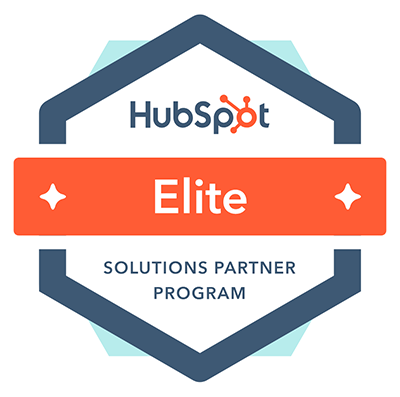Social Media Platforms You Should Target
Think social media campaigns are only for big brands with thousands, if not millions, of followers? Convinced you need massive internal resources even to get started? Think again! Not every social platform is right for every business, so it’s crucial to understand which ones to target for growing your small or midsized business while providing customers with an outstanding social media experience
Leverage Social Media to Grow
Nearly 20 years after MySpace first came on the scene, social media is now a fundamental part of how people share and receive information. Consider this: in 2008, less than a quarter of consumers in the U.S. had a social media profile. Today, over 80% have one, and the number keeps growing.
People use social media to keep in touch with family and friends, stay updated on the latest news, and advance their careers. For small and midsized businesses, the top social media platforms—Facebook, X (formerly Twitter), LinkedIn, Pinterest, Instagram, and TikTok—serve as channels to interact with customers on a deeper, more personal level.
While most small businesses use social media, most concentrate on Facebook. However, only some have figured out how to leverage social media marketing effectively. Here’s a brief overview of how the “Big 6” can help you increase your reach and ROI.
Facebook: The King of Social Media
Despite recent controversies, Facebook remains the most popular social media network globally. Small businesses can use it to engage with customers one-on-one, share updates, and run targeted ads. Facebook’s advanced targeting options allow businesses to reach specific demographics, interests, and behaviors, making it a powerful tool for customer acquisition and retention.
Best Practices for Facebook:
Engage Regularly: Post updates, respond to comments, and interact with your audience.
Utilize Facebook Ads: Use targeted ads to reach your ideal customer base.
Leverage Groups: Create or join groups relevant to your industry to build community and brand loyalty.
X (formerly Twitter): RealTime Engagement
X allows small businesses to respond to customers almost in real-time. This platform is excellent for providing customer service, staying updated on industry trends, and engaging in conversations that matter to your brand. It’s a level playing field where small brands can compete with larger ones by being responsive and timely.
Best Practices for X:
Monitor Trends: Keep an eye on trending topics to join relevant conversations.
Engage with Followers: Respond to mentions and direct messages promptly.
Use Hashtags: Utilize popular and industry-specific hashtags to increase visibility.
Instagram: Visual Storytelling
Instagram, owned by Facebook, has over a billion global users and is a visual powerhouse. Small businesses can showcase their products, share user-generated content, and engage with customers through posts, stories, and reels. The platform’s features, like shoppable posts and IGTV, provide creative ways to market your business.
Best Practices for Instagram:
High-quality visuals: Invest in good photography and design for your posts.
Consistent Branding: Maintain a cohesive aesthetic that reflects your brand.
Engage with Hashtags: Use relevant hashtags to increase your content's discoverability.
Pinterest: Inspiration and Discovery
Pinterest may seem niche, but it’s a valuable resource for small businesses, especially those in creative industries. Users come to Pinterest for inspiration and ideas, making it an ideal platform for sharing visual content that drives traffic back to your website.
Best Practices for Pinterest:
Create Rich Pins: Use pins that include additional information like pricing and availability.
Organize Boards: Curate boards that reflect the different aspects of your brand and products.
Collaborate with Influencers: Partner with Pinterest influencers to reach a broader audience.
LinkedIn: B2B Networking
LinkedIn is the go-to platform for professionals and B2B businesses. It’s perfect for sharing industry insights, networking, and establishing your business as a thought leader. Small businesses can use LinkedIn to connect with other companies, share professional content, and recruit talent.
Best Practices for LinkedIn:
Publish Articles: Share long-form content that demonstrates your expertise.
Engage in Groups: Join LinkedIn groups relevant to your industry to build connections.
Optimize Your Profile: Ensure your company profile accurately reflects your brand.
TikTok: Creative and Viral Potential
TikTok is the newest major player in the social media landscape. It’s known for its short, engaging videos that can go viral quickly. Small businesses can use TikTok to create fun, creative content that uniquely showcases their products or services.
Best Practices for TikTok:
Create Engaging Content: Focus on short, entertaining videos that capture attention.
Leverage Trends: Participate in popular challenges and trends to increase visibility.
Collaborate with Influencers: Work with TikTok influencers to reach a larger audience.
Growing Your Business with Social Media
If you’re a small or midsized business owner who’s put off developing a social media strategy because you’re busy running your business, an inbound marketing agency can help. They can increase traffic, conversions, and sales while building a solid customer base. Hands down, social media can offer the best return on your marketing investment.
Schedule a free consultation with us to learn how social media can grow your business. Our experts can help you develop and implement a strategy tailored to your unique needs, driving growth and increasing ROI.

The Rich Text module offers editing options for multiple types of content, such as text formatting, images, links, CTAs, and more.




